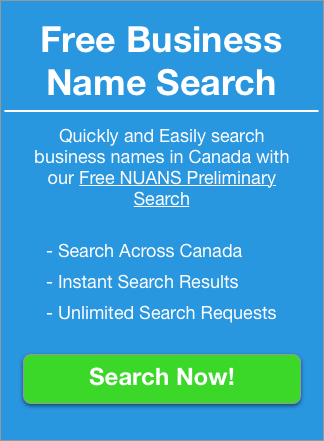Where To Begin When Starting A Business In Canada

You’ve got a great idea for a great business, but the road to create a business is a bit more complicated than just having a great idea.
Thousands of businesses start and die in Canada every year – 12,590 failed in just the professional, scientific and technical services sector in 2013.
How do you create a business that thrives? Keep reading to find out.
First Steps To Create A Business
We all have to start somewhere.
But before you jump off the deep end with finance plans, incorporation documents and the speech about how you’ll take over the world, you need to cover the basics.
Like your business plan. And your business name. You know, the essentials.
Build Your Business Plan
First things first: to create a business, you need a business plan.
You’ve got your great idea, but if you don’t know how you’re going to execute that great idea, it’ll never be anything but an idea.
Think of your business plan as your step-by-step guide to how you’re going to make your business a reality.
This includes your vision statement and mission statement, which aren’t the same thing. You’ll need to figure out what they are – and if you need both.
It also includes laying out what you want, which is just as important as what you want to achieve. A solid business plan will include, among other things, an executive summary, a business description, a competitive analysis, and a design and development plan.
Naming Your Business
You can’t get far if no one knows who you are. Especially if you don’t know who you are.
Funny how that throws a wrench into the whole marketing process.
Your name is who you are – so you need to make sure it covers a few bases.
It should be a name that rolls off the tongue, something easy to say and easy to remember – think Coca-Cola.
But it should also convey meaning. As in: someone should read it and know right away what benefit you have for them. Just, don’t try to be everything for everyone.
Oh, and it should also be something you can legally trademark.
Not sure whether another company has already claimed your great name? We have a tool for that.
Set Up Your Domain Name and Registrar
Welcome to the age of the geek. To create business, you’re going to need a web presence.
To do this, you’ll want to go the extra mile and pick an accredited domain registrar from the Internet Corporation for Assigned Names and Numbers (ICANN).
You’ll also need to pick a top-level domain (TLD) extension, which for most Canadian businesses is .ca. Although .com and .net are also popular choices.
Oh, and read the fine print – the registrar is often responsible for drafting the domain holder’s contract. This includes making sure that security is a top priority for your provider.
Once that’s done, make sure your renewal notices are properly set up. You’re in trouble if you fail to renew on time and have to start over from scratch.
Financial Assessment
Money, as they say, makes the world go round. It’s also what gets your business off the ground.
The money you need to create a business will depend on the scale of your venture. A lot of entrepreneurs sink their own money into their fledgling business, but you’re looking at a different story if your business is a bit bigger than me, myself and I, or if it’s a full-time job versus a side-hustle.
Many big ventures need assistance in the form of a bank loan. There are also government business grants available, depending on your business.
Of course, nothing quite helps your money as well as someone who knows what they’re talking about – like an accounting consultant.
Licence and Registration
You’ve got your name, your plan, and your money.
Now, you need your licences and registration. This includes deciding your business structure so that you can register your business accordingly.
Types of Business Structures in Canada
When you decide to create a business and make your idea the real deal, you need to choose an organizational structure.
This isn’t just for the sake of paperwork – the type of business you are and what you’re hoping to accomplish will change what type of business structure suits you best.
There are three main business structure types in Canada: Sole Proprietorship, Partnership, and Corporation.
Sole Proprietorship
A Sole Proprietorship is pretty much what it says on the tin.
You’re the sole owner of your business. That means you receive all the profits, but you’re also fully responsible for your business’ debts and obligations, and you’re personally liable.
A few advantages of this structure include:
- Easy and relatively inexpensive to register
- You have direct control over how your business runs
- Profits are yours directly
- You can often deduct losses from your taxes if your business isn’t faring well
Of course, there are also a few key disadvantages to keep in mind, the foremost being that you have unlimited liability. Also, because the success of your business is directly tied to your income, you could also be put in a higher tax bracket if your business is doing well.
Partnership
Which is also pretty much what it says on the tin.
In a Partnership, your business is a non-incorporated entity created by two or more people. The financial responsibility is shared between partners, as are the profits.
There are three types of partnerships:
- General Partnership: each partner is jointly liable for debts
- Limited Partnership: partners can contribute to the business without direct involvement in its operations
- Limited Liability Partnership: typically available only to a group of professionals such as doctors or lawyers
The advantages of a partnership are also connected to its organizational nature:
- Shared startup costs
- Shared liability
- You and your partners can often reduce your taxes by deducting your share of the losses, if the business is doing poorly
Of course, the same general disadvantages apply. Namely, you and your business are treated as the same thing, and your personal assets are still at risk if you are unable to pay your creditors.
There are also potential problems with your partners having different ideas over time – and the fact that you’re financially responsible for business decisions your partners made.
Corporation
You might be noticing a trend here – in a sole proprietorship and a partnership, you and your business are functionally the same things.
Enter, the corporation, in which your business is considered an independent entity. In other words, you are not personally liable if your business suffers losses.
Advantages of this business type include:
- Limited liability
- Transferable ownership
- Easier to raise capital
- Continuous existence as a separate legal entity
Of course, because a corporation is a separate entity, they’re also more regulated, are more expensive to set up and require detailed record keeping.
What Type of Business Structure Works for You?
We’re not talking about your sock drawer. This is not a one-size fit all situation.
Before you create a business, spend a healthy amount of time considering what type of structure would best suit your business. If you’re looking to sell sweaters you knit by hand, you may not need to be a corporation. On the other hand, a venture capital firm tends to work better with more people.
Once you know your business type, you’ll also need to register.
Create A Business The Smart Way
Creating a business is hardly the same thing as a leisurely stroll in the park. But that doesn’t mean you need to go home having stress dreams every night.
That’s where we come in. Check out our blog for ideas to keep your business on a roll, like how to build a market positioning strategy or how to build a strong organizational culture.
Ready to make full use of our business services? Check out our pricing page.

